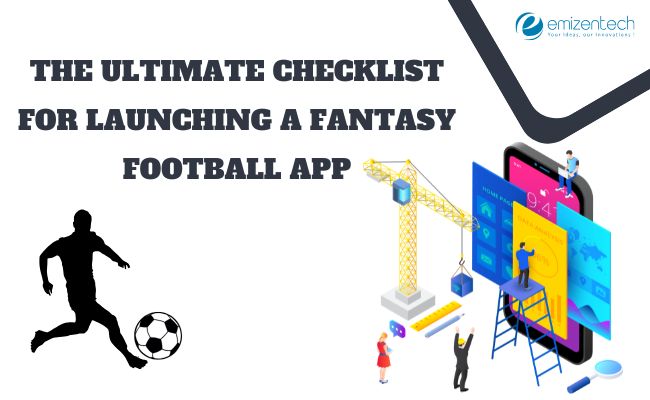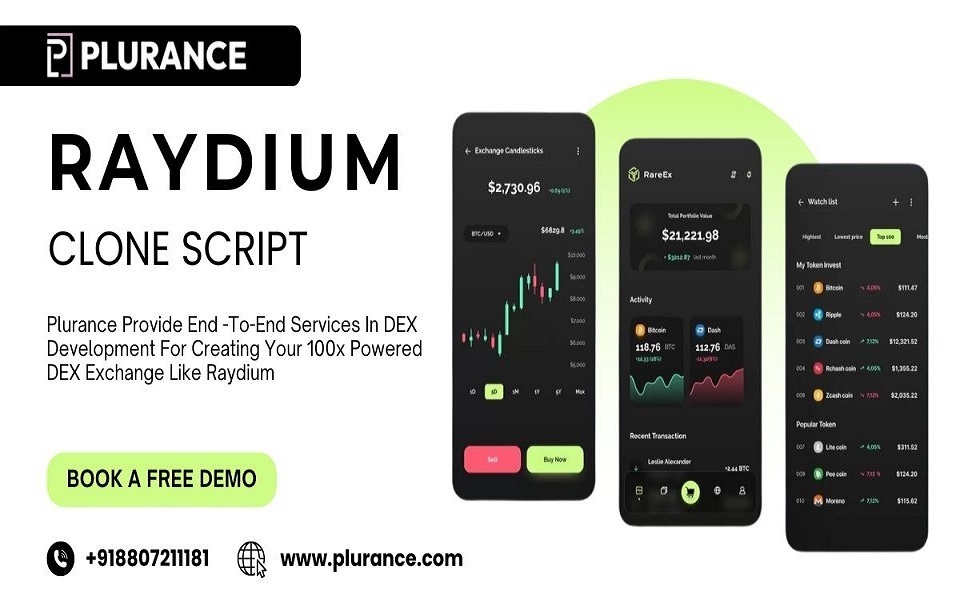The Ultimate Checklist for Launching a Fantasy Football App

Fantasy football has taken the sports world by storm, attracting millions of passionate fans who enjoy strategizing, competing, and managing their dream teams. With an ever-growing market, launching a fantasy football app is a lucrative opportunity. However, the process isn’t as simple as just creating an app and expecting users to flock to it. A structured and well-thought-out plan is essential to ensure success. From market research and monetization strategies to choosing the right technology stack and securing user data, every aspect plays a crucial role in the app’s success. This checklist will serve as your ultimate guide, covering everything you need to launch a fantasy football app that stands out in a competitive market.
Market Research and Target Audience
Before diving into development, it’s vital to understand your target audience and competitors. Conducting thorough research helps identify market trends, user preferences, and gaps in existing apps. Start by analyzing the top fantasy football apps in the market—what features do they offer? What are their strengths and weaknesses? This competitive analysis can provide insights into what works and what doesn’t. Understanding your target audience is equally important. Fantasy football enthusiasts range from casual players to hardcore strategists. Some may prefer a simple, user-friendly interface, while others might look for advanced analytics and detailed player statistics. Segmenting your audience based on their experience level, preferences, and spending habits allows you to tailor your app’s features accordingly. Additionally, studying geographical trends can be beneficial. Fantasy football is more popular in certain regions, and different countries may have varying legal requirements and user expectations. Conduct surveys, analyze social media discussions, and study user reviews of existing apps to gain deeper insights into what users are looking for in a fantasy football app.
Business Model and Monetization Strategy
Your fantasy football app should have a clear monetization strategy to ensure long-term sustainability. There are several ways to generate revenue, each with its pros and cons:
- Subscription-Based Model: Users pay a recurring fee (monthly or yearly) to access premium features such as advanced analytics, ad-free experience, or exclusive leagues. This model ensures steady revenue but requires high user retention.
- In-App Purchases: Offering virtual items, custom team logos, or power-ups can drive revenue. Users can pay for additional features like detailed player stats, draft assistance tools, or unique customization options.
- Advertisements: Running ads within the app, such as banner ads, video ads, or sponsored content, can generate income. However, excessive ads can lead to a poor user experience, so balancing monetization with usability is key.
- Sponsorships and Partnerships: Collaborating with sports brands, influencers, or media companies can bring in revenue while also increasing user engagement. Sponsorships can include branded tournaments or special promotional events.
Choosing the right model depends on your target audience and app features. A combination of multiple revenue streams often works best, ensuring profitability without compromising the user experience.
Key Features of a Fantasy Football App
To make your app stand out, it must include essential features that enhance user experience and engagement:
- User Registration & Authentication: A smooth and secure registration process is essential. Users should be able to sign up via email, phone number, or social media accounts. Two-factor authentication (2FA) can add an extra layer of security, preventing unauthorized access. Additionally, integrating biometric login (fingerprint or facial recognition) enhances user convenience.
- Drafting System: A fantasy football app revolves around drafting players, so having a flexible drafting system is crucial. Users should have multiple draft options—manual draft, auto-draft, and auction draft—to suit different preferences. The draft experience should be engaging, allowing users to strategize, set pre-draft rankings, and receive real-time updates on player selections.
- Live Score Updates & Player Statistics: Users expect real-time performance updates for their selected players and teams. Integrating live score APIs ensures users get accurate and instant updates. Advanced statistics like player form, injury status, and historical data can enhance engagement and help users make better decisions.
- Community & Social Features: Engagement is key to retaining users. Features like chat rooms, discussion forums, and private leagues allow users to interact, discuss strategies, and compete with friends. Enabling users to share their achievements on social media increases the app’s visibility and attracts new users.
- Push Notifications & Alerts: Timely notifications keep users engaged. Alerts for upcoming matches, last-minute player changes, injury updates, and league results ensure users stay connected and take immediate action when needed.
- Secure Payment Gateway: If your app includes paid leagues or premium features, integrating secure payment options is crucial. Support for multiple payment methods, including credit/debit cards, digital wallets, and cryptocurrencies, enhances user convenience and trust.
Each feature should be optimized for performance, ensuring a smooth experience across different devices.
UI/UX Design Considerations
Creating a visually appealing and user-friendly fantasy football app is crucial for ensuring high user retention and engagement. Here are some key UI/UX design considerations:
- Intuitive Navigation: Users should be able to easily find their way through the app without confusion. A well-structured menu, clear buttons, and logical page transitions make navigation seamless. Keeping essential features accessible within a few taps enhances usability.
- Mobile-First Design: Since most users access fantasy football apps via their smartphones, prioritizing a mobile-first design is essential. The app should be fully responsive, adapting smoothly across various screen sizes and devices without compromising the experience.
- Dark and Light Mode Options: Offering customization options like dark and light mode enhances user experience, catering to different preferences and reducing eye strain. A well-designed theme switcher allows users to toggle between modes effortlessly.
- Fast Load Times: Slow-loading apps frustrate users and lead to high bounce rates. Optimizing images, minimizing unnecessary animations, and using efficient coding practices help ensure smooth and fast performance.
- Consistent Design Language: Maintaining consistency in colors, fonts, and button styles creates a visually appealing and professional interface. Adhering to a unified design system improves brand recognition and user trust.
- Interactive and Engaging Elements: Adding interactive features like drag-and-drop functionality for team management, animated score updates, and engaging visuals enhances the overall user experience. Gamification elements like badges, achievements, and leaderboard animations make the app more enjoyable.
By focusing on these UI/UX aspects, you can create a fantasy football app that is not only functional but also engaging and visually appealing.
Choosing the Right Technology Stack
- Native vs. Cross-Platform Development: Native development (Swift for iOS, Kotlin for Android) offers high performance and full access to device features but requires separate codebases. Cross-platform solutions like React Native and Flutter allow single-codebase development, reducing time and costs while ensuring smooth performance.
- Backend and Database Selection: The backend handles data processing, authentication, and real-time updates. Node.js, Python (Django), and Java (Spring Boot) are popular choices. Databases like PostgreSQL, Firebase, and MySQL provide scalable data storage and quick retrieval for smooth app performance.
- API Integrations for Real-Time Data: Real-time sports data is critical for fantasy football apps. APIs like Sportradar, FantasyData, and Football API provide live scores, player stats, and match updates. Payment gateways (Stripe, PayPal) and social media APIs enhance user engagement and monetization.
Security and Compliance Measures
Ensuring the security and compliance of your app is crucial to protect user data and maintain trust. Failing to meet security standards can lead to data breaches, legal penalties, and reputational damage. Here are three essential security and compliance measures every app must follow:
- Implement Encryption for User Data: Encryption is a fundamental security practice that protects sensitive user information from unauthorized access. By using strong encryption protocols, such as AES-256 or RSA, data is securely stored and transmitted between users and servers. This ensures that even if hackers intercept the data, they cannot decipher it without the proper decryption keys. Encryption should be applied to user credentials, payment details, and any personally identifiable information (PII).
- Adhere to GDPR and Other Legal Requirements: Compliance with data protection regulations is essential to avoid legal issues and maintain user trust. Regulations like the General Data Protection Regulation (GDPR) and California Consumer Privacy Act (CCPA) set strict guidelines on how businesses should handle user data. This includes obtaining user consent, providing data access controls, and ensuring the right to data deletion. Companies must stay updated with evolving compliance laws to prevent hefty fines and operational disruptions.
- Use Multi-Factor Authentication for Login Security: Multi-factor authentication (MFA) adds an extra layer of security to user logins. Instead of relying solely on passwords, MFA requires additional verification, such as a one-time passcode (OTP), biometric authentication, or email confirmation. This significantly reduces the risk of unauthorized access, even if a user’s password is compromised.
By implementing these security and compliance measures, businesses can safeguard user data, enhance app security, and build long-term trust with customers.
Marketing and User Acquisition Strategies
A well-planned marketing strategy is essential for driving user engagement and ensuring long-term success. Implementing the right techniques helps businesses attract, convert, and retain customers effectively. Below are key strategies to maximize user acquisition:
- Leverage Social Media Ads: Social media platforms like Facebook, Instagram, and Twitter provide powerful advertising tools to target potential users based on their interests, behavior, and demographics. Running paid ad campaigns helps in reaching a wider audience, generating brand awareness, and increasing app downloads. Businesses can use A/B testing to optimize ad creatives and improve conversion rates.
- Partner with Influencers in the Sports Industry: Collaborating with sports influencers or industry experts can significantly boost brand visibility. Influencers have a loyal following, and their recommendations build trust among their audience. By partnering with relevant influencers, brands can promote their products or services authentically, leading to higher engagement and user acquisition.
- Optimize Your App Store Listing for Better Discoverability: App store optimization (ASO) plays a crucial role in attracting organic users. Optimizing key elements like the app title, description, keywords, and screenshots improves search rankings. Positive reviews and high ratings also enhance credibility, encouraging more users to download the app.
By integrating these strategies, businesses can enhance user acquisition, build brand awareness, and ensure sustainable growth in the competitive digital landscape.
Launch and Post-Launch Maintenance
Successfully launching an application or website is just the beginning. The launch phase involves deploying the platform, ensuring all functionalities work seamlessly, and optimizing performance for a smooth user experience. Thorough testing, security checks, and final adjustments are crucial before making the platform live. Post-launch maintenance is equally important to ensure long-term success. Regular updates, performance monitoring, bug fixes, and security patches keep the platform running efficiently. Businesses must also analyze user feedback and optimize features to enhance customer satisfaction. Ongoing maintenance helps prevent downtime, improves security, and ensures scalability as the business grows. A well-planned launch and continuous maintenance are key to sustaining a competitive edge in the digital space.
Scaling the App for Future Growth
As your app gains traction, scaling becomes essential to sustain user engagement and increase revenue. Expanding your app’s offerings not only attracts new users but also keeps existing users engaged. Here are two effective ways to scale your app for long-term growth:
- Introduce New Fantasy Sports Leagues: Expanding the range of fantasy sports leagues in your app can help you attract a broader audience. While starting with popular leagues like the NFL, NBA, or Premier League is a great strategy, consider adding niche sports such as cricket, eSports, or regional leagues. This diversification allows your app to appeal to users with different preferences, increasing user acquisition and retention. Additionally, offering season-long and daily fantasy sports options can cater to various playing styles, ensuring more engagement.
- Add Gamification Elements Like Rewards and Achievements: Gamification is a powerful tool to enhance user engagement. By integrating features like leaderboards, achievements, and reward systems, users feel a sense of accomplishment and motivation to participate regularly. For instance, offering points or badges for frequent play, referrals, or winning contests can encourage user activity. Additionally, introducing loyalty programs where users earn in-app rewards or discounts for consistent engagement can boost retention rates.
Scaling your fantasy sports app with these enhancements ensures long-term growth by keeping users engaged, attracting new audiences, and increasing overall revenue potential.
Conclusion
Launching a fantasy football app requires more than just an innovative idea—it demands careful planning, strategic execution, and continuous improvements. A well-researched business model, user-friendly interface, and engaging features can set your app apart in a competitive market. Moreover, leveraging expert fantasy football application development services can ensure smooth execution and scalability. As the fantasy football industry continues to grow, having a robust marketing strategy and post-launch support will be key to long-term success. Whether you’re a startup or an established business, following this checklist will put you on the path to creating an app that captivates users and keeps them coming back for more.
FAQs
- How long does it take to develop a fantasy football app?
The timeline varies depending on the features and complexity, but typically, it takes 4-6 months. - What are the costs involved in fantasy football app development?
Costs range from $20,000 to $200,000, depending on customization, technology, and team size. - Why should I hire a fantasy football application development service?
Experts provide tailored solutions, ensuring a high-quality, scalable app with all necessary features. - Can I monetize my fantasy football app?
Yes, through subscriptions, in-app purchases, advertisements, and sponsorships. - Which platform is best for a fantasy football app?
Both iOS and Android are ideal; cross-platform development ensures a wider reach.









